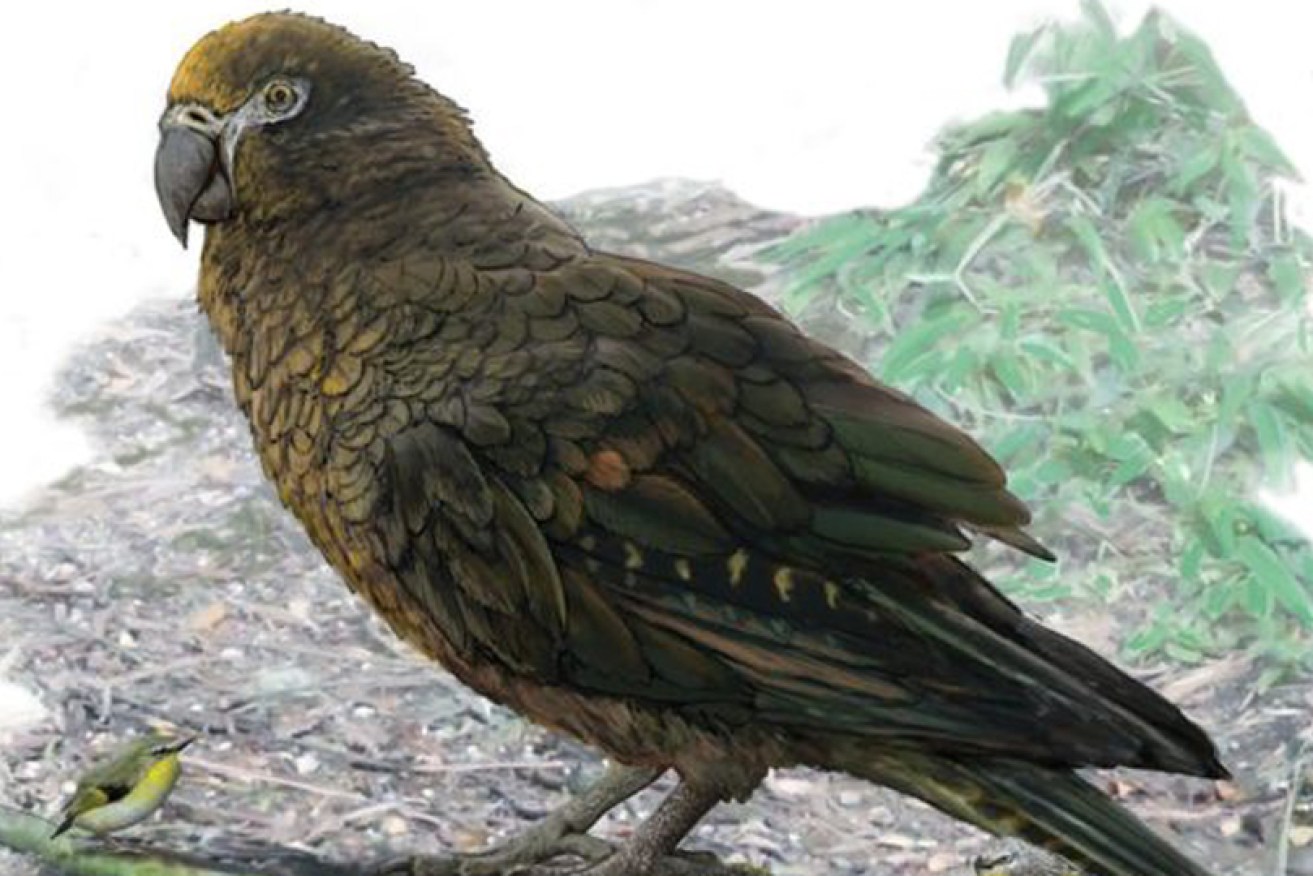Scientists discover evidence of a one-metre tall, prehistoric parrot


An image of the giant Heracles. Photo: Supplied
Australian palaeontologists have revealed that a one-metre tall parrot once roamed the wild lands across the ditch.
The world’s largest parrot was found in fossils about 19 million years old near St Bathans, south of Christchurch, in New Zealand.
Researchers estimate the bird, which they have named Heracles inexpectatus, would have been about a metre tall and weighed up to seven kilograms. It was likely also flightless.
Flinders University Associate Professor Trevor Worthy said Heracles was found in an area well known for its giant birds.
“Not only moa dominated avifaunas but giant geese and adzebills shared the forest floor, while a giant eagle ruled the skies,” he said on Wednesday.
“But until now, no one has ever found an extinct giant parrot – anywhere.”

Heracles inexpectatus on the forest floor, with wrens at its feet. Photo: Supplied
Palaeontologists from Flinders University, the University of NSW and New Zealand’s Canterbury Museum have been excavating in the area for 20 years.
They continue to unearth new birds and animals from the Central Otago fossils.
Professor Mike Archer, from the UNSW, said Heracles was “the largest parrot ever, no doubt. With a massive parrot beak that could crack wide open anything it fancied, it may well have dined on more than conventional parrot foods, perhaps even other parrots”.
“This was Squawkzilla. This was a potential horror that was maybe eating other parrots,” he said.
Professor Worthy said New Zealand’s birds have long been considered unique in that it was they, rather than mammals, who dominated the land.
“They included an unusually high number of flightless species, often large, and most found nowhere else besides New Zealand,” he said.
Among them is the kakapo. It is the world’s heaviest living parrot – reaching up to 3.5 kilograms – and the only flightless one. It is nocturnal, and now critically endangered.
#kakapo are BIG – the world's biggest #parrot. Now imagine one *twice the size*. Fantastic. https://t.co/AwPts0wMsZ via @NatGeoScience pic.twitter.com/znLN9so5UV
— Dr Andrew Digby (@takapodigs) August 6, 2019
Professor Worthy said the fragments of bone that led to the discovery of Heracles had been sitting on a shelf since 2008 – “patiently waiting for their turn to be described”.
“We had known that St Bathans also contains eagle fossils of similar size, so the Heracles fossils were put on the eagle pile while we waited to find more fossils that might tell us more,” he said.
“On pulling them out and looking more closely, it was immediately clear that these were not eagle bones, so we started trying to work out what they were.”
Parrots were not on the researchers’ radar at first, purely because the bones were larger than those of any known parrot.
“After a while the bones told their story – they were of a parrot, and nothing else was remotely similar,” Professor Worthy said.
“Moreover, they were in some ways fairly similar to the kakapo. And so Heracles inexpectatus was born, the name derived from Greek mythology.”
-with AAP








